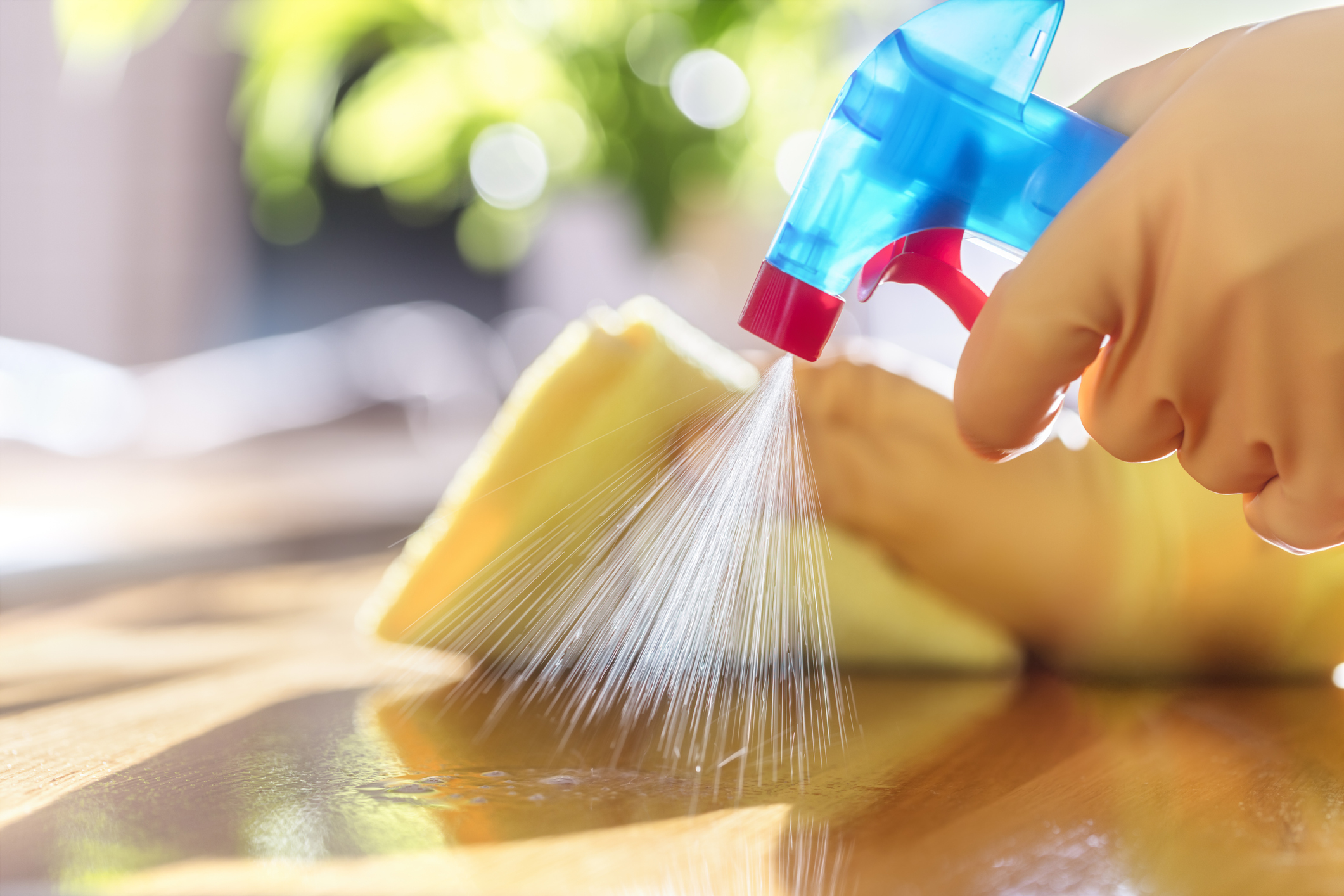Get Easy Health Digest™ in your inbox and don’t miss a thing when you subscribe today. Plus, get the free bonus report, Mother Nature’s Tips, Tricks and Remedies for Cholesterol, Blood Pressure & Blood Sugar as my way of saying welcome to the community!
Popular bleach alternative not so safe to disinfect your home

If the cleaners you use in your home have this one ingredient, even if you’re using a bleach alternative, you could be increasing your risk of respiratory problems, like asthma.
From eye and skin irritation to serious lung problems
What’s the ingredient?
Good old hydrogen peroxide.
If you’re like me, you probably didn’t even know that it’s commonly used in disinfectants. In fact, if a disinfectant doesn’t use bleach, the ingredient of choice is often hydrogen peroxide.
And while hydrogen peroxide may not sound dangerous, a team of scientists from the University of Saskatchewan were worried about its potential to pollute the air around you and pose a danger to your health.
They say that, “When you’re washing surfaces, you are also changing the air you are breathing.” And this can translate to real health risks since, “Poor indoor air quality is associated with respiratory issues such as asthma,” says chemistry researcher and senior author of the study, Tara Kahan.
In addition to lung problems, hydrogen peroxide can even cause skin and eye irritation.
So the scientists decided to quantify that risk level.
After performing their study, the team found that mopping a floor with a commercially available hydrogen peroxide-based disinfectant (one you could have picked up walking down the cleaning aisle at your local supermarket) raised the level of airborne hydrogen peroxide to more than 600 parts per billion.
To put that into perspective, it’s about 60 percent of the maximum level permitted for exposure over eight hours, and a whopping 600 times the level naturally occurring in the air!
And that was after disinfecting the floor only — not like when you mop your floor, wipe down your counters and clean your sinks.
The team says that they measured at face height only. That concentration would have been even stronger at floor, or at the level of a countertop you had sprayed with the disinfectant.
They also point out with pets and children physically closer to the surfaces you disinfect, they could be in even more danger.
Safe disinfection doesn’t have to be so harsh
When asked how to disinfect and cleanse your home with less risk, the team had these suggestions.
- Stick with soap and water instead of a disinfectant – They’re known to kill the virus and you won’t have to worry about air pollution.
- Get air flowing – Open a window, turn on a range hood or using your central air system. The point is to reduce the levels of pollutants by circulating the air.
- Nix the bleach too – Even though this study focused on the dangers of hydrogen peroxide, the disinfectant ingredient is still safer than bleach.
You can also check out the Environmental Working Group’s recommendations on greener cleaners here that are safer choices for both a bleach alternative and a hydrogen peroxide alternative.
Editor’s note: Have you heard of EDTA chelation therapy? It was developed originally to remove lead and other contaminants, including heavy metals, from the body. Its uses now run the gamut from varicose veins to circulation. Click here to discover Chelation: Natural Miracle for Protecting Your Heart and Enhancing Your Health!
Sources:
Bleach-alternative COVID-19 surface disinfectants may pollute indoor air: USask research — EurekAlert!













